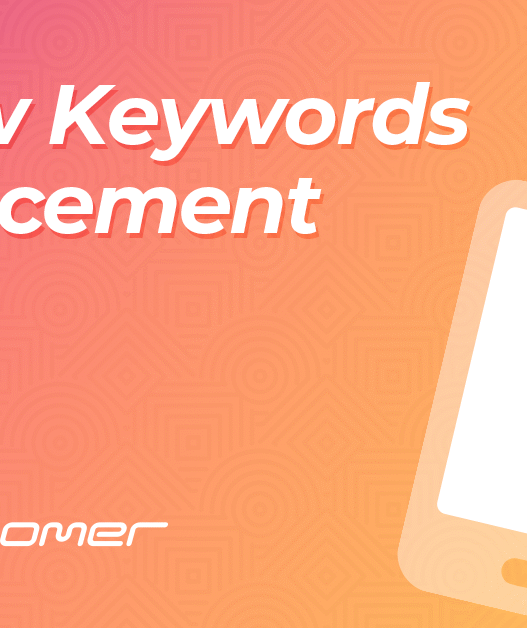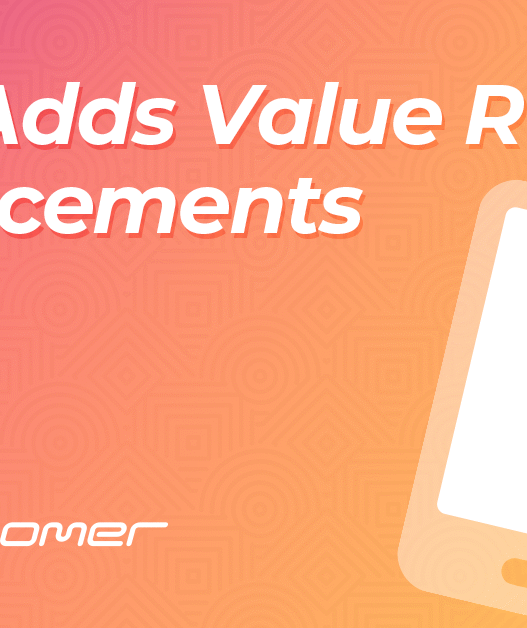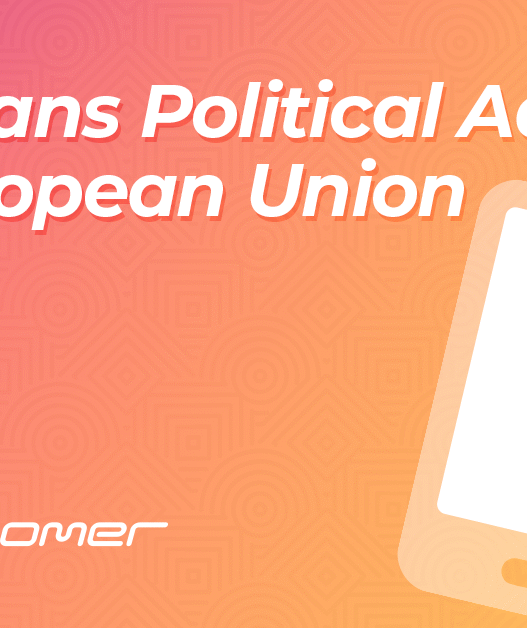The old methods of targeting control are either ineffective or irrelevant now. If your campaign construction process consists of obsessively flipping targeting switches, you’re wasting your time. You may even be hurting your results.
The reason many advertisers are stuck in these old ways is they fall for myths about the guidance Meta needs to reach their ideal audience. In some cases, these myths were recommended best practices at one time. In all, they make reasonable sense and are based on perception, rather than reality.
My goal is to make the case to push you away from these old methods. I don’t want to bully you away from the things you’ve always done. Instead, my hope is that a lightbulb moment occurs where you understand why your role is different now.
Most importantly, I want you to divert your energy to much more productive activities. While older methods may be far less necessary now, you still retain a role that helps guide Meta to your ideal customer.
Let’s get to it…
Old Methods are Ineffective or Irrelevant
In order to make this necessary shift, it’s critical that you understand that many of the targeting strategies you’re using are no longer effective or relevant. They either attempt to control something that can’t be controlled or provide targeting guidance that Meta doesn’t need.
Detailed Targeting
You’ve likely noticed that your detailed targeting (also known as interests and behaviors) options keep shrinking. Meta has removed thousands of detailed targeting options to prevent misuse. They’ve also consolidated narrowly-focused options while leaving the broadest to survive.

And even when you provide detailed targeting options, you’re rarely restricting the audience. If you’re optimizing for conversions, value, link clicks, or landing page views, your detailed targeting inputs are only used as audience suggestions.

Based on my tests, it’s questionable whether audience suggestions are given much weight at all. They won’t hurt you, but suggestions are little more than a way to make you feel like you’re contributing to results.
Lookalike Audiences
Similar to detailed targeting inputs, your lookalike audience inputs are only used as suggestions when optimizing for conversions or value.

Lookalike audiences are often 1-2 million people (sometimes bigger) without Meta expanding it. So if it’s used as a suggestion, it’s questionable whether it’s altering delivery at all.
Since you should be optimizing for some type of conversion in most cases, your lookalike audience isn’t providing the direction you think it is. It’s unlikely that it’s hurting results, but it surely isn’t required for good performance either.
Age and Gender
When using the new Advantage+ campaign setup or Advantage+ Audience with the old setup, any age and gender inputs you provide are audience suggestions.

While you can restrict your audience by age and gender, it’s not generally advisable. Especially if you are optimizing for a purchase, your restrictions often do more harm than good.
Location
I’m not suggesting that location is unnecessary now and that you should just leave it blank or use the “Worldwide” region. You should isolate your targeting to the relevant countries that you serve. If you’re a local business, you should attempt to restrict your targeting to your local area.
But the key word here is attempt. Location targeting is extremely limited now. There was a time when you could isolate the people who lived in a certain location or were traveling. But now the only option is “living in or recently in” the location.

I get the frustration of those who only want to reach locals or travelers. While there are some things you should do (see later in this post), the solution isn’t found within targeting.
Remarketing
This one is the toughest sell for advertisers who make remarketing a major part of their strategy. They see the results, so it’s nearly impossible to convince them that their efforts are likely unnecessary.
I know this because I was one of these advertisers. A very high percentage of my budget was spent on remarketing for many years, and my eyes told me that it was the right approach. But I was wrong.
There are some critical truths about remarketing that you need to understand:
1. Remarketing happens naturally now. If you’re like me, you won’t accept this blindly. Make sure to define your audience segments in Advertising Settings. Then break down sales campaign results by audience segments. You may discover that anywhere from 20-40% of your budget is being spent on remarketing audiences.

Based on my tests, there’s no indication that using custom audiences as suggestions impacts distribution at all. Meta will naturally prioritize these people because they are among those most likely to perform the action that you want.
2. Remarketing isn’t scalable. Most remarketing audiences are small, so restricting your targeting to people who only visit your website or performed a certain action will result in a quickly-exhausted audience. The amount you can spend is limited, which also limits your potential results. But you could scale if you targeted broadly, which includes your remarketing audiences anyway.
If you’re dealing with a very limited budget, I get the attractiveness of relying entirely on remarketing if it gets results. But even then, I’d consider a broader approach first.
3. Results are inflated and lack incrementality. The inflated results found with remarketing are why advertisers are so resistant to abandon it. A high percentage of your conversions are likely view-through. Your ad was shown to someone who also received an email or saw another post from you later that day and acted on it. Even when the results are click-through, your ad was likely one of many efforts that contributed to the conversion.
In other words, remarketing isn’t incremental. It’s not that your ad didn’t make any impact at all, but a portion of your conversions would have happened without your ad. This percentage is much higher for remarketing than it would be for a cold audience.
Read More About Targeting Now
I wrote another post that breaks down the evolution of these targeting options. Read it here:
Targeting Myths
I’ve found there is a consistent theme of beliefs that many advertisers have that are hooked to the old ways of targeting. These myths need to be busted…
“Meta needs interests and behaviors to isolate people interested in my product.”
This just isn’t true. Maybe it was at one time. But Meta is working with mounds of historical data and countless real-time signals to determine who should see your ads. Meta doesn’t need you to provide an audience suggestion of people interested in baseball to know that your baseball-centric product should be shown to people interested in that topic.
If you have any doubts about this, click on an ad for shoes or some other product. You will then be served countless ads from different advertisers and brands promoting similar products. It’s not because these advertisers listed “shoes” as an interest. It’s because Meta knows how to leverage signals from user activity.
“Meta needs a lookalike based on my customers to find people like them.”
I hope that this is the easiest myth to bust. Lookalike audiences were introduced in 2013. That’s right, 12 years ago. They were a huge development then because they allowed advertisers to better guide Meta to people similar to our customers, rather than going through the endless loop of trying to define them with interests and behaviors.
But things are different now. Assuming we’re sending Meta conversion events, the list of our customers isn’t a mystery. Meta knows who is engaging with our content, visiting our website, on our email list, and buying from us.
Do you actually believe that Meta is unable to connect the dots to find customers based on these signals without specifically providing a lookalike audience as a suggestion? Meta doesn’t need your lookalike audience anymore. Algorithmic targeting behaves as one big lookalike audience now.
“Meta needs age and gender restrictions that reflect my ideal customer.”
Once again, Meta probably knows more about your ideal customer and potential customer than you do. If you sell men’s clothing for an audience generally between 25 and 44, it’s highly unlikely that you need to restrict targeting to men in that age group when optimizing for a purchase. The algorithm knows who is likely to buy.
We’ve seen this in the wild. A business that caters to women relied on algorithmic targeting and no gender restrictions. The algorithm knew to prioritize women and spent 99% on that demographic.

What harm can it do, though, right? Well, you may be limiting yourself unnecessarily. If you sell men’s clothing, a female partner may be who makes the purchase. If you limit to 25-44, your 45-year-old potential customer can’t be reached.
When this works properly, our expected “ideal customer” age and gender will still be prioritized, but you’re given the possibility of reaching others if it may lead to the action that you want.
“Meta needs my remarketing audiences because they work the best.”
No, Meta certainly does not. This first became evident when Advantage+ Audience was rolled out. Meta said then that if you didn’t provide audience suggestions, they’d prioritize pixel activity, conversion data, and prior engagement with your ads. In other words: Remarketing.

In most cases, you don’t need to restrict targeting to your website visitors or email list or people who engage with your content on Facebook and Instagram. Meta already knows how valuable those people are, and they’ll be prioritized.
How to Impact Who Sees Your Ads
Now, here’s the problem: If you take a completely hands-off approach from targeting inputs, you aren’t guaranteed to reach a relevant audience with your ads. There is additional work you must do to be sure that happens.
1. Performance Goal
I can’t emphasize enough how important this is. The algorithm is literal, so Meta will work hard to get results that match your goal action. That goal action is defined by your performance goal.

If you optimize for the action you want most (typically a conversion of some sort), Meta will do the best job of digging through data and signals to find the people who match your ideal customer.
But if you optimize for some top-of-the-funnel action and assume that Meta will still care about reaching people who will eventually buy from you, you’re sadly mistaken. Your ads will be delivered to people who are likely to click or watch or engage. But that may have absolutely nothing to do with making an eventual purchase.
In many ways, the performance goal directs targeting now. Treat it with the level of importance that it deserves.
2. Activity and History
The reason that providing lookalike and remarketing audiences is mostly unnecessary now is that Meta should have the data to prioritize your current customers and people like them by default. If they don’t, that will obviously be a problem.
One of your responsibilities is to be sure that Meta is receiving conversion event data, whether it be web or CRM events, so that activity performed by your most important people is already known. This would be a prerequisite to conversion optimization in the first place, of course.
This is where I’ll often get questions like, “Well, what about new businesses that don’t have this history?” The unfortunate truth is that you’re at a disadvantage.
Meta isn’t working blindly, of course. The algorithm will still learn from the activity that comes in. But if you lack that foundation of historical data, you’re missing a pretty significant source of algorithmic learning.
Does that mean that you should restrict targeting audiences to counter these limitations? Probably not. You won’t be able to restrict by detailed targeting or lookalike audience anyway when optimizing for conversions. You can provide them (and custom audiences) as suggestions if you want, but I wouldn’t resort to that approach immediately.
3. Copy and Creative
You’ve likely heard some version of “Targeting happens in your ad now,” and there’s a whole lot of truth to it. How exactly this happens isn’t completely clear, but there are certain things that we know.
Some have theorized that Meta scans the copy and creative to help determine who should see our ads. While that is possible, it wouldn’t be necessary for these items to impact who sees your ads.
Look at copy less from a perspective of needing keywords that Meta scans, since we don’t know that it happens. Look instead at how copy and creative can either attract or repel an audience.
Use copy to speak directly to your ideal customer. Focus on their unique lifestyle, experiences, and pain points. Your product isn’t for the general population as a whole, and it’s important that your copy reflects that.
Is your product for advertising executives who own an agency and manage millions of dollars in advertising? Then you should say that. Be clear who your product is for and whom it benefits. Don’t hide from price if your ideal customer values luxury.
You can also use copy to repel the bad fits. Be willing to use copy to push people away. Take a clear stand on what type of person isn’t your ideal customer.
And also use creative and imagery to do the same. Use it to reflect the life of your target audience. If you serve retirees, you’d obviously want to feature people in the 60+ range. Use imagery that reflects their life and experiences.
Attracting and repelling with copy and creative are a huge part of how you impact who sees your ads.
4. Your Offer
This should be obvious. It’s not good enough for your offer to be compelling. A free iPad is a compelling offer to subscribe to a list. Your offer needs to be uniquely compelling to your target demographic.
In some cases, it may only be interesting to your ideal customer. But they get it, and they want it.
While discounts are generally a good approach to increase sales, they aren’t right for everyone. If you are selling a luxury item to an audience with significant expendable income, a discount may actually reflect poorly on your product. The higher price may reflect value to the right people.
5. Impact Who Completes the Action
Let’s put this into simple terms that most advertisers understand. Think about the learning phase. During the first week, Meta’s delivery algorithm is learning from your results to make adjustments to who sees your ads. The results reflect when people perform the action you want, as defined by the performance goal.
This is a critical period of time, particularly for lead collection. Meta doesn’t know or care about the quality of the leads who complete your form. The only care is that someone performed the action that you want. The algorithm will learn from it.
So the goal should be to make sure that your ideal lead completes the form while the bad fit does not. This can be accomplished through the questions you ask and how you handle their answers.
For example, if your ideal customer is an agency owner, your form should ask questions like these:
- Do you own an agency?
- How many clients does your agency have?
- How much cumulative ad budget do you manage?
- What industries are your ad clients in?
It’s possible that the questions themselves would be enough to push away the non-agency owner. If not, you could apply some logic that handles the leads differently based on how these questions are answered.
If you use instant forms, you can apply conditional logic to kick people out of forms who don’t answer the way you’d like. If you use a website form, you could use some creative programming to send people to different confirmation pages (one that triggers an event and one that doesn’t) based on how questions are answered.
It’s important to remember how important these completed actions are to Meta’s learning process. You can impact it in positive ways, which also has an effect on who will ultimately see your ads.
A Summary: Your Approach
Let’s summarize how you should approach the various ways that you can impact who sees your ads…
1. Let go of targeting inputs.
In most cases, these restrictions aren’t helping. And by letting go of what little control you had there, you’re freeing yourself up to focus on things that matter way more.
2. Focus where it matters.
If you’re not reaching a relevant audience, the instinct will be to head back to targeting controls. Resist this urge. Instead, think more about why the wrong people are being shown your ads.
Are you using the right performance goal? Do the copy and creative appeal to your target demographic while repelling those who aren’t a good fit? Is your offer attractive to the right people? Are you able to impact who completes your desired action to help the algorithm learn?
Start there. This is where you can make the most impact. If you aren’t getting the results you want, it’s almost always because of your ads. View targeting restrictions as a last resort.
Exceptions and mirages
I will get plenty of disagreement on this approach. Advertisers will swear by their targeting restrictions because of the results that they get.
In some cases, these are purely mirages. You are getting good results from your detailed targeting or lookalike audiences, but it doesn’t necessarily mean that the use of those inputs is what caused the results (correlation vs. causation).
In others, yes, there are exceptions when you should consider additional targeting restrictions, if they are possible. But in many cases, those restrictions aren’t possible in the first place (you just think you’re restricting the audience). In others, there’s a very specific problem that’s unique to what you are trying to accomplish that requires some additional control.
Have a standard approach and know that deviating from it will be an exception to solve a problem.
Your Turn
Are there any other creative methods you use to impact who sees your ads?
Let me know in the comments below!









